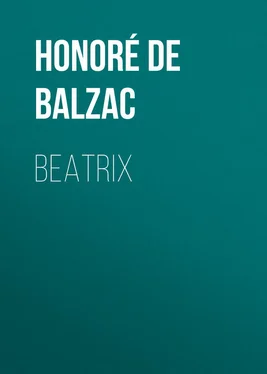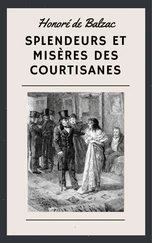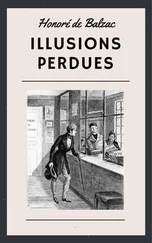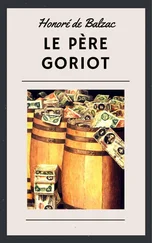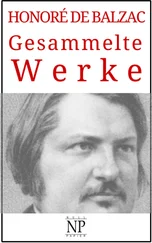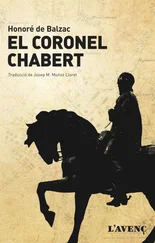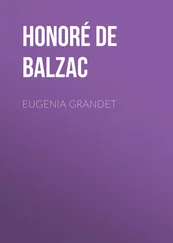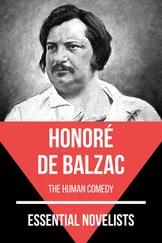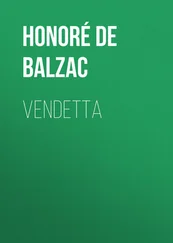Honoré Balzac - Beatrix
Здесь есть возможность читать онлайн «Honoré Balzac - Beatrix» — ознакомительный отрывок электронной книги совершенно бесплатно, а после прочтения отрывка купить полную версию. В некоторых случаях можно слушать аудио, скачать через торрент в формате fb2 и присутствует краткое содержание. Жанр: literature_19, foreign_antique, foreign_prose, на английском языке. Описание произведения, (предисловие) а так же отзывы посетителей доступны на портале библиотеки ЛибКат.
- Название:Beatrix
- Автор:
- Жанр:
- Год:неизвестен
- ISBN:нет данных
- Рейтинг книги:5 / 5. Голосов: 1
-
Избранное:Добавить в избранное
- Отзывы:
-
Ваша оценка:
- 100
- 1
- 2
- 3
- 4
- 5
Beatrix: краткое содержание, описание и аннотация
Предлагаем к чтению аннотацию, описание, краткое содержание или предисловие (зависит от того, что написал сам автор книги «Beatrix»). Если вы не нашли необходимую информацию о книге — напишите в комментариях, мы постараемся отыскать её.
Beatrix — читать онлайн ознакомительный отрывок
Ниже представлен текст книги, разбитый по страницам. Система сохранения места последней прочитанной страницы, позволяет с удобством читать онлайн бесплатно книгу «Beatrix», без необходимости каждый раз заново искать на чём Вы остановились. Поставьте закладку, и сможете в любой момент перейти на страницу, на которой закончили чтение.
Интервал:
Закладка:
If you go to Guerande after reading this history you cannot fail to quiver when you see that blazon. Yes, the most confirmed republican would be moved by the fidelity, the nobleness, the grandeur hidden in the depths of that dark lane. The du Guaisnics did well yesterday, and they are ready to do well to-morrow. To DO is the motto of chivalry. “You did well in the battle” was the praise of the Connetable par excellence , the great du Guesclin who drove the English for a time from France. The depth of this carving, which has been protected from the weather by the projecting edges of the arch, is in keeping with the moral depth of the motto in the soul of this family. To those who know the Guaisnics this fact is touching.
The gate when open gives a vista into a somewhat vast court-yard, on the right of which are the stables, on the left the kitchen and offices. The house is build of freestone from cellar to garret. The facade on the court-yard has a portico with a double range of steps, the wall of which is covered with vestiges of carvings now effaced by time, but in which the eye of an antiquary can still make out in the centre of the principal mass the Hand bearing the sword. The granite steps are now disjointed, grasses have forced their way with little flowers and mosses through the fissures between the stones which centuries have displaced without however lessening their solidity. The door of the house must have had a charming character. As far as the relics of the old designs allow us to judge, it was done by an artist of the great Venetian school of the thirteenth century. Here is a mixture, still visible, of the Byzantine and the Saracenic. It is crowned with a circular pediment, now wreathed with vegetation, – a bouquet, rose, brown, yellow, or blue, according to the season. The door, of oak, nail-studded, gives entrance to a noble hall, at the end of which is another door, opening upon another portico which leads to the garden.
This hall is marvellously well preserved. The panelled wainscot, about three feet high, is of chestnut. A magnificent Spanish leather with figures in relief, the gilding now peeled off or reddened, covers the walls. The ceiling is of wooden boards artistically joined and painted and gilded. The gold is scarcely noticeable; it is in the same condition as that of the Cordova leather, but a few red flowers and the green foliage can be distinguished. Perhaps a thorough cleaning might bring out paintings like those discovered on the plank ceilings of Tristan’s house at Tours. If so, it would prove that those planks were placed or restored in the reign of Louis XI. The chimney-piece is enormous, of carved stone, and within it are gigantic andirons in wrought-iron of precious workmanship. It could hold a cart-load of wood. The furniture of this hall is wholly of oak, each article bearing upon it the arms of the family. Three English guns equally suitable for chase or war, three sabres, two game-bags, the utensils of a huntsman and a fisherman hang from nails upon the wall.
On one side is a dining-room, which connects with the kitchen by a door cut through a corner tower. This tower corresponds in the design of the facade toward the court-yard with another tower at the opposite corner, in which is a spiral staircase leading to the two upper stories.
The dining-room is hung with tapestries of the fourteenth century; the style and the orthography of the inscription on the banderols beneath each figure prove their age, but being, as they are, in the naive language of the fabliaux , it is impossible to transcribe them here. These tapestries, well preserved in those parts where light has scarcely penetrated, are framed in bands of oak now black as ebony. The ceiling has projecting rafters enriched with foliage which is varied for each rafter; the space between them is filled with planks painted blue, on which twine garlands of golden flowers. Two old buffers face each other; on their shelves, rubbed with Breton persistency by Mariotte the cook, can be seen, as in the days when kings were as poor in 1200 as the du Guaisnics are in 1830, four old goblets, an ancient embossed soup-tureen, and two salt-cellars, all of silver; also many pewter plates and many pitchers of gray and blue pottery, bearing arabesque designs and the arms of the du Guaisnics, covered by hinged pewter lids. The chimney-piece is modernized. Its condition proves that the family has lived in this room for the last century. It is of carved stone in the style of the Louis XV. period, and is ornamented with a mirror, let in to the back with gilt beaded moulding. This anachronism, to which the family is indifferent, would grieve a poet. On the mantel-shelf, covered with red velvet, is a tall clock of tortoise-shell inlaid with brass, flanked on each side with a silver candelabrum of singular design. A large square table, with solid legs, fills the centre of this room; the chairs are of turned wood covered with tapestry. On a round table supported by a single leg made in the shape of a vine-shoot, which stands before a window looking into the garden, is a lamp of an odd kind. This lamp has a common glass globe, about the size of an ostrich egg, which is fastened into a candle-stick by a glass tube. Through a hole at the top of the globe issues a wick which passes through a sort of reed of brass, drawing the nut-oil held in the globe through its own length coiled like a tape-worm in a surgeon’s phial. The windows which look into the garden, like those that look upon the court-yard, are mullioned in stone with hexagonal leaded panes, and are draped by curtains, with heavy valances and stout cords, of an ancient stuff of crimson silk with gold reflections, called in former days either brocatelle or small brocade.
On each of the two upper stories of the house there are but two rooms. The first is the bedroom of the head of the family, the second is that of the children. Guests were lodged in chambers beneath the roof. The servants slept above the kitchens and stables. The pointed roof, protected with lead at its angles and edges, has a noble pointed window on each side, one looking down upon the court-yard, the other on the garden. These windows, rising almost to the level of the roof, have slender, delicate casings, the carvings of which have crumbled under the salty vapors of the atmosphere. Above the arch of each window with its crossbars of stone, still grinds, as it turns, the vane of a noble.
Let us not forget a precious detail, full of naivete, which will be of value in the eyes of an archaeologist. The tower in which the spiral staircase goes up is placed at the corner of a great gable wall in which there is no window. The staircase comes down to a little arched door, opening upon a gravelled yard which separates the house from the stables. This tower is repeated on the garden side by another of five sides, ending in a cupola in which is a bell-turret, instead of being roofed, like the sister-tower, with a pepper-pot. This is how those charming architects varied the symmetry of their sky-lines. These towers are connected on the level of the first floor by a stone gallery, supported by what we must call brackets, each ending in a grotesque human head. This gallery has a balustrade of exquisite workmanship. From the gable above depends a stone dais like those that crown the statues of saints at the portal of churches. Can you not see a woman walking in the morning along this balcony and gazing over Guerande at the sunshine, where it gilds the sands and shimmers on the breast of Ocean? Do you not admire that gable wall flanked at its angles with those varied towers? The opposite gable of the Guaisnic mansion adjoins the next house. The harmony so carefully sought by the architects of those days is maintained in the facade looking on the court-yard by the tower which communicates between the dining-room and the kitchen, and is the same as the staircase tower, except that it stops at the first upper story and its summit is a small open dome, beneath which stands a now blackened statue of Saint Calyste.
Читать дальшеИнтервал:
Закладка:
Похожие книги на «Beatrix»
Представляем Вашему вниманию похожие книги на «Beatrix» списком для выбора. Мы отобрали схожую по названию и смыслу литературу в надежде предоставить читателям больше вариантов отыскать новые, интересные, ещё непрочитанные произведения.
Обсуждение, отзывы о книге «Beatrix» и просто собственные мнения читателей. Оставьте ваши комментарии, напишите, что Вы думаете о произведении, его смысле или главных героях. Укажите что конкретно понравилось, а что нет, и почему Вы так считаете.
